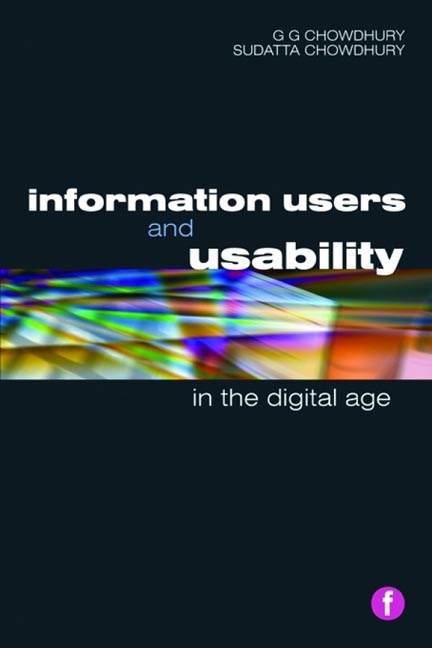Book contents
- Frontmatter
- Contents
- Preface
- Figures and tables
- 1 Introduction
- 2 Information needs and user studies
- 3 Human information behaviour studies and models
- 4 Usability study basics
- 5 Usability study participants
- 6 Usability data analysis
- 7 Web usability
- 8 The usability of digital libraries
- 9 The digital divide, digital natives and usability
- 10 Issues and trends in usability research
- Index
9 - The digital divide, digital natives and usability
Published online by Cambridge University Press: 09 June 2018
- Frontmatter
- Contents
- Preface
- Figures and tables
- 1 Introduction
- 2 Information needs and user studies
- 3 Human information behaviour studies and models
- 4 Usability study basics
- 5 Usability study participants
- 6 Usability data analysis
- 7 Web usability
- 8 The usability of digital libraries
- 9 The digital divide, digital natives and usability
- 10 Issues and trends in usability research
- Index
Summary
Introduction
The distinction between those who have access to information and communication technologies (ICTs) and those who do not is called the digital divide. It marks the disparity between ICT ‘haves’ and ‘have nots’. At first the digital divide was defined in binary terms: a gap between ICT ‘haves’ and ‘have nots’, but more recently researchers (Norris, 2001; Chowdhury, 2004) have noted that a digital divide can be of different types:
• the social divide: the difference in access between diverse social groups
• the global divide: the difference in access to the internet
• the democratic divide: the different applications and uses of online information to engage and participate in social life.
There is a general belief that the digital divide only exists between the developed and developing counties. While this is true – because of the lack of ICT infrastructure, telephone and internet access, and generally poor educational level and socio‑economic conditions of the population in developing countries – a digital divide also exists among different sectors of societies in developed countries.
How does the digital divide affect usability of information products and services? Obviously if people have no or only limited access to ICTs in general, and internet and digital information services in particular, they will use no online information products and services, or fewer than others do. This chapter discusses the concept of the digital divide, how it is measured, and associated parameters such as digital literacy. It provides some statistics to indicate how the digital divide exists in different nations in the developed and developing world, and discusses how the digital divide affects the usability of information products and services and what lessons can be learned relating to digital literacy research.
Connotations of the digital divide
In a report on the digital divide the Organisation for Economic Co‑operation and Development (OECD) (2001) defines the digital divide as ‘the gap between individuals, households, businesses and geographic areas at different socio‑economic levels with regard to their opportunities to access information and communication technologies (ICTs) and to their use of the internet for a wide variety of activities.
- Type
- Chapter
- Information
- Information Users and Usability in the Digital Age , pp. 169 - 186Publisher: FacetPrint publication year: 2011



